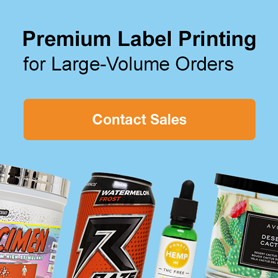Everything You Need To Know About Pet Food Label Compliance
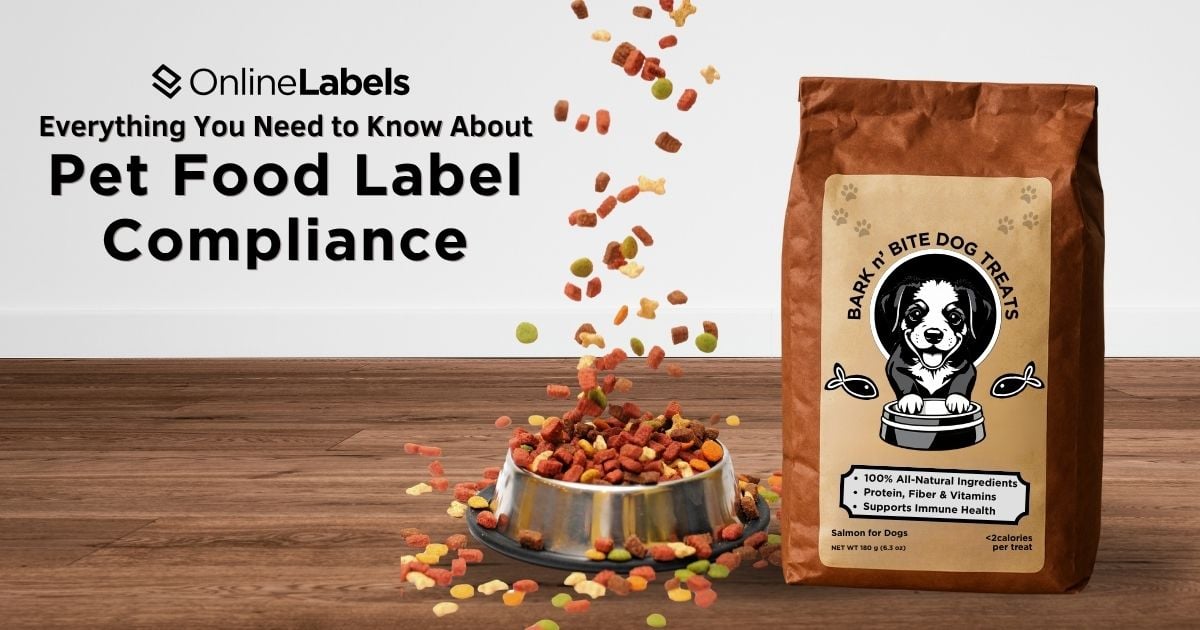
Consumers are often just as concerned with what goes into their pets' food as what goes into their own. Pet food labels contain legally required content designed to inform, protect, and guide pet owners in providing a safe and healthy diet for their animals. If you're a new pet food brand or an established company looking for updates in pet food compliance, this guide will walk you through what you need to know from the federal requirements, how to settle elements in a design, and label material recommendations.
How are Pet Food Labels Regulated?
Pet food labels are moderated by federal and state policies, which are covered by the Food and Drug Administration (FDA) and the Association of American Feed Control Officials (AAFCO). These two organizations help ensure that pet food is safe, accurately labeled, and nutritionally appropriate for the animals it’s designed to feed.
What is the Role of the FDA Requirements?
At the federal level, the Food and Drug Administration (FDA) is responsible for setting and enforcing mandatory regulations for all animal feeds, including pet food and treats. The FDA also focuses on sanitary conditions, misuse of harmful substances, and accurate labeling.
What are the Differences Between FDA Requirements for Human vs. Pet Food?
Unlike human food, the FDA does not strictly enforce pet food regulations. However, under the Federal Food, Drug, and Cosmetic (FD&C) Act, pet food labels must include key information to ensure product safety, meet sanitary standards, be free from harmful substances, and feature accurate labeling.
Pet Food Ingredient Labels
FDA focuses on first approving the ingredients used in the food and treats to prevent potential contamination. Some food products considered safe include meat, poultry, grains, and any product that contains a rich variety of minerals, vitamins, or other supplements. However, food colorings need additional approval as food additives. Other FDA requirements include:
- Product identification: all the bags, cans, and containers must clearly state the intended species (dog, cat, etc.), and if relevant, include breed or size recommendations (e.g., “For Small Breed Dogs”).
- Net weight or quantity statement: indicate the total weight of the package (in pounds, ounces, or grams). For treats, include the number of servings or individual treats in the package.
- Ingredient list: includes a list of the ingredients by weight. Meat tends to be higher because it contains moisture. Some food products tend to have ingredient splitting, which is when a product is broken into smaller portions. For example, gluten tends to be divided into corn gluten meal, corn flour, and whole ground corn.
- Feeding instructions: explain how to properly feed your pet the product, often based on the pets' weight or age. This helps prevent overfeeding or underfeeding.
- Manufacturer or distributor contact information: provides the company name, address and a way to contact the provider. This is required so consumers can reach out with questions, complaints or feedback.
The FDA requirements are not optional and form the foundation of legal compliance for any pet food label.
What is the Role of the AAFCO Requirements?
The Association of American Feed Control Officials (AAFCO) is a non-profit organization that helps establish specific regulations for pet food labels. Unlike the FDA, it is not a government agency, so its norms are not mandatory. Nevertheless, many companies follow their policies.
Do the FDA and the AAFCO Have a Connection?
Members of the FDA assist with voting polls in AAFCO meetings and get involved in decisions regarding ingredients approved by the AAFCO and its definition process. The AAFCO Model Bill includes definitions that the FDA also utilizes.
Label Requirements According to AAFCO
A pet food label contains eight primary elements that must be placed at the front of the label. At the front, the product name, species, and amount contained in the product should always be included. A breakdown of all the elements in the label according to AAFCO includes:
- Brand’s name: AAFCO requirements promote the inclusion of ingredient names in the product name, depending on the percentage of the ingredients.
- 95% Rule: The named ingredient(s) must make up at least 95% of the product (excluding water due to moisture), or 70% including water. Example: "Beef for Dogs."
- 25% or “Dinner” Rule: if the ingredient is 25%–94%, the name must include a descriptor like "Dinner," "Recipe," or "Platter." Example: "Beef Dinner for Dogs."
- 3% or “With” Rule: if an ingredient is at least 3%, but less than 25%, the word "with" must be used. Example: "Dog Food with Beef."
- Name of Species for Which the Pet Food Is Intended: include the name of the pet type for which the food is designed. The breed of the pet is not necessary; however, the animal type is highly encouraged. (e.g., dogs, cats, rabbits, etc.)
- Quantity Statement: the product's weight must be included in the lower third of the package in pound/ounce format using metric units.
- Guaranteed Analysis: list the percentage of different product contents including protein, fat, fiber, and moisture. In the following format:
- Ingredient Statement: components must be listed in terms of weight, from highest to lowest, and all the ingredients must be approved as GRAS (Generally Recognized as Safe).
- Feeding Directions: pet food labels must include a step-by-step instruction on how to feed a specific breed per weight, looking like this:
- Name of Manufacturer or Distributor: this must include the manufacturer's contact information.
Example:
Brand Name: Happy Tails
Product Name: Chicken & Brown Rice Recipe for Adult Dogs
Pet food label products also focus on following naming rules based on their components, and follow three main AAFCO rules:
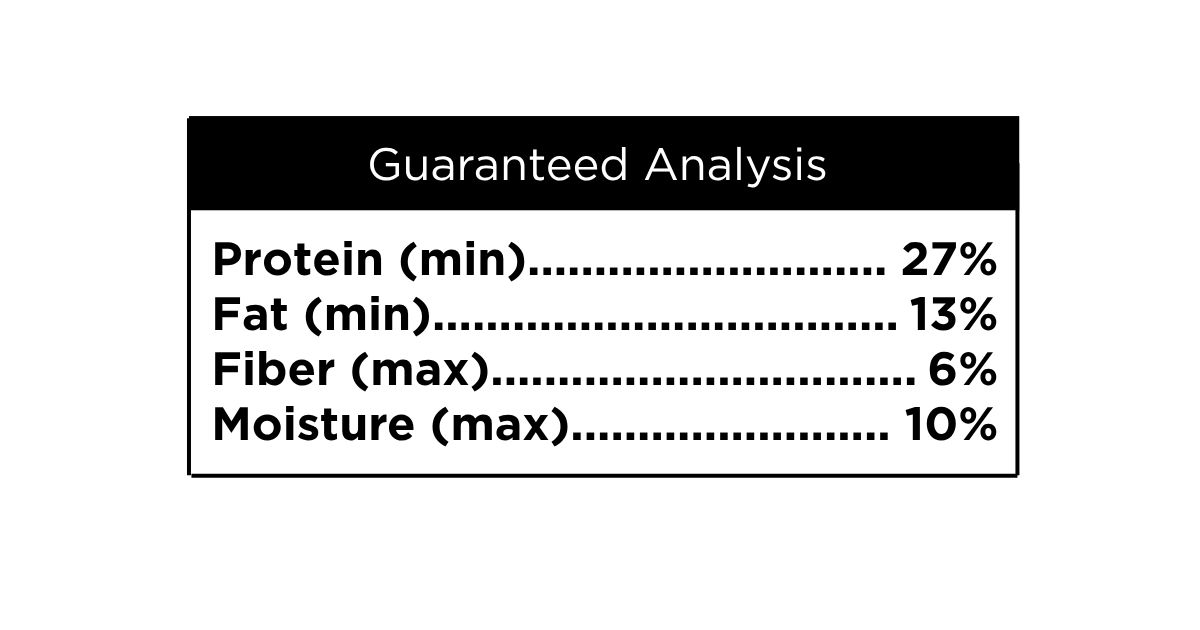
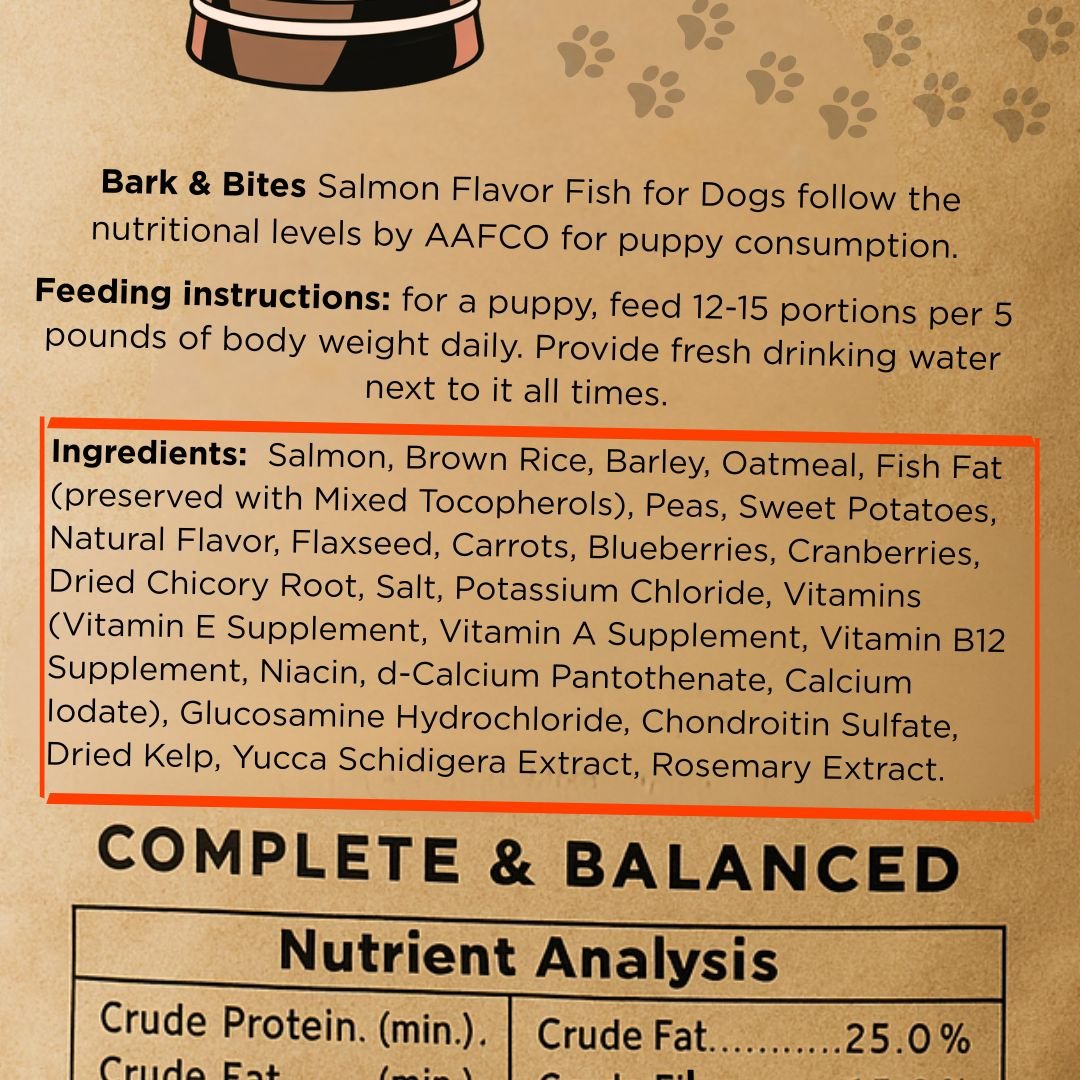
Applying FDA and AAFCO Rules to Your Pet Food Label
Designing a pet food label requires balancing the FDA and AAFCO requirements and adapting to the package design. Here is an easy breakdown on how to organize the elements in the label:
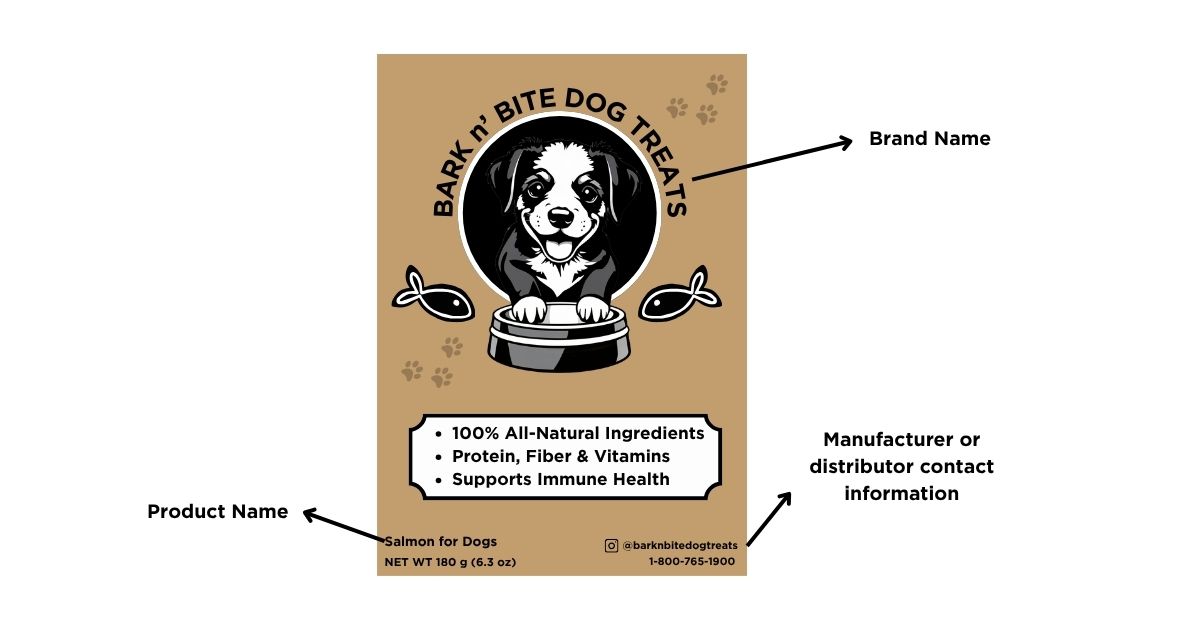
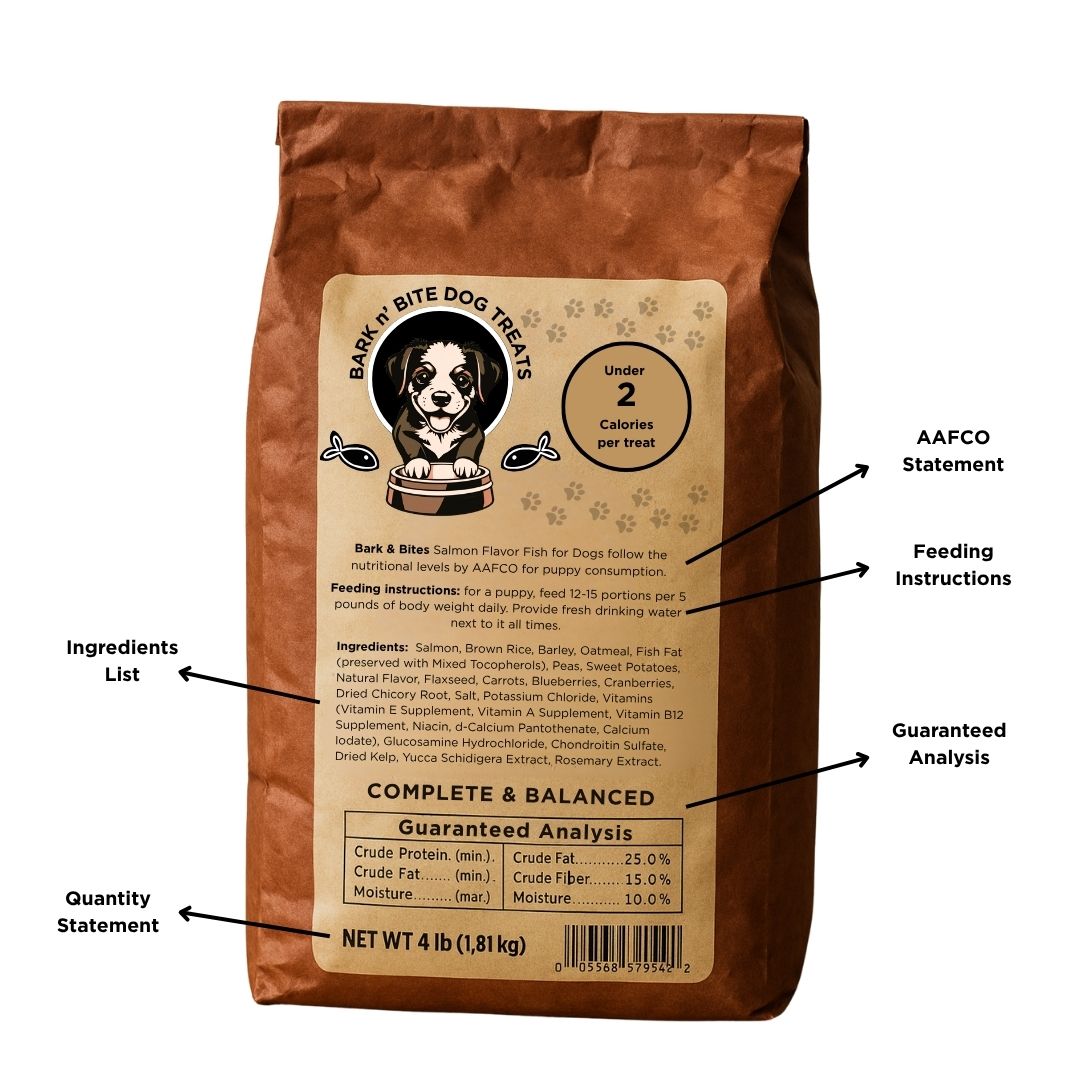
Benefits of Using Custom Labels to Create Your Pet Food Labels
Professionally printed labels offer a range of benefits over do-it-yourself labeling, making pet food packaging more durable and visually appealing. The right combination of materials and finishes can withstand harsh environmental conditions and build customer trust. Custom labels can support your brand in several ways, including:
- Durable material and lamination options: pet food labels often face external elements during shipping and storage. Custom roll labels can be finished with protective laminates that resist moisture, oil, and scratches when paired with a White Weatherproof (BOPP) material.
- Unique materials to help packaging stand out: materials like Estate#9 material add visual and tactile appeal with exceptional color and texture.
Contact our sales team to learn about premium label printing options like cold foiling, shrink sleeves, and flexible packaging.
Key Takeaways of Creating Pet Food Labels
Following pet food label regulations not only helps you stay compliant and gain the trust of your customers. If you're launching a new pet food brand or updating your current labels, following the FDA and AAFCO guidelines will ensure clear and safe packaging. By staying informed about evolving trends and pet food label requirements, your brand can stand out in a competitive market while delivering transparency and quality that pet owners can rely on.


